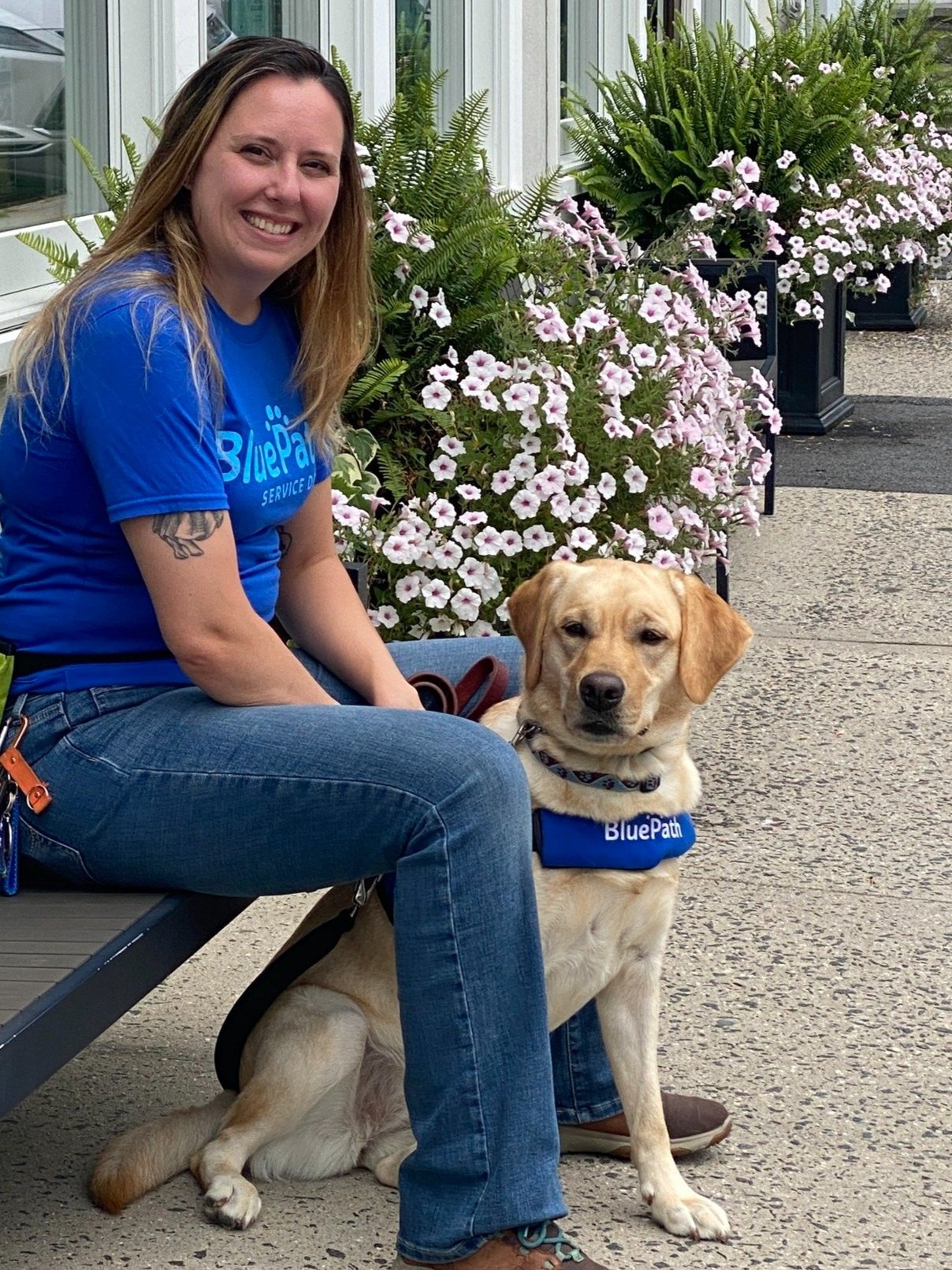
WHAT YOU WILL NEED
CLICKER
Do you need it? No, but it can speed up learning if used correctly. If you want to geek out on training, this is for you. If not, skip it.
TREAT POUCH
A treat pouch is a great way to make sure you have treats when you need them. Leave it next to your leash and you will be set!
LEASH
A good 4-6ft leash is a staple in dog training. Leather leashes are much gentler on the hands than most other materials.
TREATS
Bil-Jac makes a variety of amazing treats (the dogs agree) and these are no different. Great for dogs that love peanut butter!
NOTE: All products have affiliate links, which means I earn a small commission on each item purchased from the links. I appreciate your support and wish you happy training!
OVERVIEW
“Close” is a cue you will use when seated in a chair. The cue lets your dog know you want them to sit between your knees with their head facing away from the chair. This will put your dog’s rear end and tail under the chair, which makes this an awesome cue to use when you go out in public with your dog as it will protect them from being stepped on in a crowded area.
Phase 1: Teach the behavior
Your dog will get into position by moving in a counterclockwise, circular motion between your knees and then sitting when facing away from you with their rear end under the chair.
To teach this you will have the dog follow a treat. Start by bringing the treat from your dog’s nose to your right knee, in toward your belly button, then to your left knee, and finishing with your hand about two feet straight out from your belly button. This crates a counterclockwise path for your dog to follow, which gets them into a position where their back end is between your knees and their front end is faced away from you. Then use your “sit” hand cue to lure them into a seated position. When they comply, Click and treat. Practice this several times over several sessions. As this is a more complex behavior, it will likely take some time to fully teach.
While luring your puppy into position think about the way their body needs to move for this behavior to happen. Your dog’s full body needs to move in a circular motion. If they are only following the treat with the front half of their body, try making the motion with the treat even more exaggerated. You can also use your free hand to help guide your dog’s back end into position.
Phase 2: Fade the lure and solidify a hand cue
The hand cue for this behavior will be two taps on your inner thigh with your left hand. To teach this to your dog, before luring them into position, tap your inner thigh twice, then lure. Practice this several times over several sessions.
When your puppy is starting to quickly and easily follow the treat into position, stop using food as a lure. You can continue an empty hand for them to follow into position. When they complete the behavior, click and treat. Eventually your puppy will hear the two taps and will start to anticipate what that means. They will begin to get into position on their own. Once they are getting into position on their own after hearing the two taps, move to phase 3.
Phase 3: Teach the verbal cue
Say “close” followed by two taps on your inner left thigh. When they complete the behavior, click and treat. Practice this over several sessions. Once they are responding reliably to just your verbal cue, move to phase 4.
Phase 4: Selective reinforcement
Once your puppy is responding consistently to both your hand signal and verbal cue, you can start to only feed for the best responses. Over time, you can become more and more selective as your dog will not need such a high rate of reinforcement.




